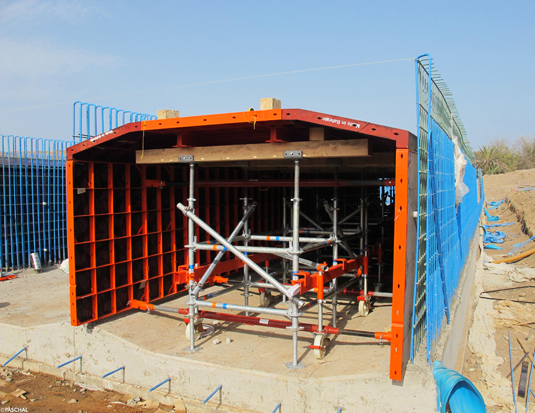Box culverts play a vital role in infrastructure projects, providing a robust and efficient solution for the passage of water, utilities, and pedestrians. Constructing box culverts requires careful planning and execution, with formwork being a crucial aspect of the process. In this article, we will delve into the intricacies of box culvert formwork, answering key questions and providing valuable insights for successful construction.
Understanding Box Culvert Formwork:
Box culvert formwork involves creating a temporary structure to support the wet concrete during the curing process, ensuring the desired shape and strength of the culvert. Here are some key considerations:
What materials are used for box culvert formwork?
Box culvert formwork primarily utilizes timber, steel, or aluminum. Timber formwork is cost-effective and easy to fabricate, while steel and aluminum offer enhanced strength and durability. The choice of material depends on factors such as project requirements, budget, and availability.
How is the formwork designed?
Formwork design for box culverts involves determining the appropriate dimensions, reinforcement requirements, and joint details. Structural engineers and formwork specialists collaborate to create precise designs that meet the project’s specifications, ensuring the safety and integrity of the structure.
What steps involve in box culvert formwork?
Preparation: Before beginning the formwork, the construction site needs to be clear, leveled, and compacted. Any required trenches or foundations excavated as per the design.
Setting up the formwork: The formwork then install according to the design plans, ensuring accurate alignment and dimensions. This involves assembling panels, bracing them securely, and ensuring proper sealing to prevent concrete leakage.
Reinforcement placement: Steel reinforcement bars placed
as per the design requirements, ensuring adequate cover and proper positioning to enhance the culvert’s structural strength.
Pouring the concrete: Once the formwork and reinforcement are in place, the concrete pour, taking care to avoid segregation and air pockets. Vibrators may use to ensure proper compaction and distribution of the concrete.
Curing and form removal: After the concrete has set, the curing process begins. The formwork is kept in place until the concrete gains sufficient strength. Once cured, the formwork is carefully removed, and any necessary finishing touches are applied.
Conclusion:
Box culvert formwork is a critical component of constructing durable and reliable culverts. By understanding the materials, design process, and steps involved, construction professionals can ensure successful execution. With the proper implementation of formwork techniques and adherence to best practices, box culverts can withstand the test of time, contributing to sustainable infrastructure development.

